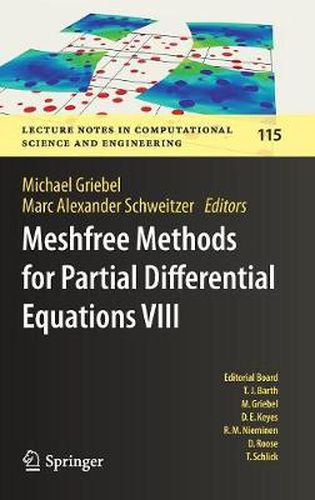Readings Newsletter
Become a Readings Member to make your shopping experience even easier.
Sign in or sign up for free!
You’re not far away from qualifying for FREE standard shipping within Australia
You’ve qualified for FREE standard shipping within Australia
The cart is loading…






This title is printed to order. This book may have been self-published. If so, we cannot guarantee the quality of the content. In the main most books will have gone through the editing process however some may not. We therefore suggest that you be aware of this before ordering this book. If in doubt check either the author or publisher’s details as we are unable to accept any returns unless they are faulty. Please contact us if you have any questions.
There have been substantial developments in meshfree methods, particle methods, and generalized finite element methods since the mid 1990s. The growing interest in these methods is in part due to the fact that they offer extremely flexible numerical tools and can be interpreted in a number of ways. For instance, meshfree methods can be viewed as a natural extension of classical finite element and finite difference methods to scattered node configurations with no fixed connectivity. Furthermore, meshfree methods have a number of advantageous features that are especially attractive when dealing with multiscale phenomena: A-priori knowledge about the solution’s particular local behavior can easily be introduced into the meshfree approximation space, and coarse scale approximations can be seamlessly refined by adding fine scale information. However, the implementation of meshfree methods and their parallelization also requires special attention, for instance with respect to numerical integration.
$9.00 standard shipping within Australia
FREE standard shipping within Australia for orders over $100.00
Express & International shipping calculated at checkout
This title is printed to order. This book may have been self-published. If so, we cannot guarantee the quality of the content. In the main most books will have gone through the editing process however some may not. We therefore suggest that you be aware of this before ordering this book. If in doubt check either the author or publisher’s details as we are unable to accept any returns unless they are faulty. Please contact us if you have any questions.
There have been substantial developments in meshfree methods, particle methods, and generalized finite element methods since the mid 1990s. The growing interest in these methods is in part due to the fact that they offer extremely flexible numerical tools and can be interpreted in a number of ways. For instance, meshfree methods can be viewed as a natural extension of classical finite element and finite difference methods to scattered node configurations with no fixed connectivity. Furthermore, meshfree methods have a number of advantageous features that are especially attractive when dealing with multiscale phenomena: A-priori knowledge about the solution’s particular local behavior can easily be introduced into the meshfree approximation space, and coarse scale approximations can be seamlessly refined by adding fine scale information. However, the implementation of meshfree methods and their parallelization also requires special attention, for instance with respect to numerical integration.